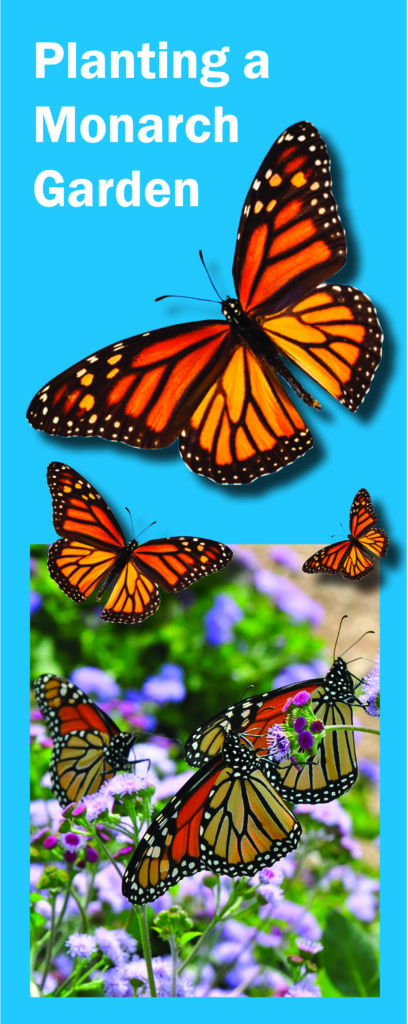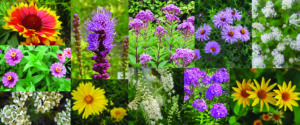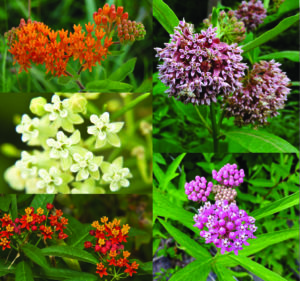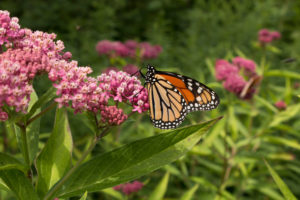If you’ve been thinking about planting a monarch butterfly garden, this is the year to get started—the future of monarch migration could depend on it!
According to the U.S. Fish and Wildlife Service, the number of monarchs has dropped from a billion at their peak to about 33 million in 2014—or more than 80% since the mid-1990s!
What can you do?
- Plant milkweed for caterpillars (Email lori@nsrwa.org for seeds.)
- Plant native plants and nectar resources for adult butterflies
- Don’t use pesticides or plants raised with pesticides
- Join a monarch citizen science project
- Contribute to conservation in other ways
Click here to download our Planting a Monarch Garden brochure. 
Milkweeds
(Clockwise from top left)
- Butterfly weed, Asclepias tuberosa
- Common Milkweed, Asclepias syriaca
- Swamp milkweed, Asclepias incarnata
- Tropical milkweed, Asclepias curassavica
- Whorled Milkweed, Asclepias verticillata

Favorite Nectar Sources
(Right – Clockwise from top left)
- Blanket flower, Gaillardia sp.
- Blazing Star or Gayfeather, Liatris spicata
- Joe-Pye Weed, Eupatorium maculatum
- New England Aster, Aster novae-angliae
- New Jersey Tea, Ceanothus americanus
- Ox-eye Sunflower, Heliopsis helianthoides
- Summer Phlox, Phlox paniculata
- Sweet Pepper Bush, Clethra alnifolia
- Tickseed, Coreopsis lanceolata
- Yarrow, Achillea millefoliu
- Zinnias (Annual)
Other Monarch Resources
- The Monarch Gardener – themonarchgardener.com
- Monarch Watch – monarchwatch.org
- Monarch Joint Venture – monarchjointventure.org
- Journey North – learner.org/jnorth/monarchs
- The Xerces Society – xerces.org/monarchs/
- Monarch Butterfly Garden – monarchbutterflygarden.net
- US Fish & Wildlife Service – Save the Monarch – fws.gov/savethemonarch
- Rose Franklin’s Perennials – Monarchs-And-Milkweed.com
WaterSmart is a nonprofit partnership between the NSRWA and 12 towns on the South Shore: Cohasset, Duxbury, Hanover, Hingham, Hull, Kingston, Marshfield, Norwell, Pembroke, Rockland, Scituate and Weymouth. Our programs are based on the belief that education is key. Since its creation, WaterSmart has educated thousands of local school-age children, adults, and businesses on water conservation, stormwater pollution, where their water comes from, and how to care for it.

- Dumpster Maintenance and Waste Materials
- Gardening Green Expo 2025
- Greenscapes
- How to Build a Rain Garden
- Indoor Water Conservation
- Low Impact Development
- Parking Lot Maintenance
- Pet Waste Education
- Plant a Monarch Garden
- Rain Barrel and Composter Sale
- School Programs
- Septic Systems
- Sign Our Water For People Not Lawns Pledge
- Stormwater
- Water Conservation Tips
- Watersmart Business




